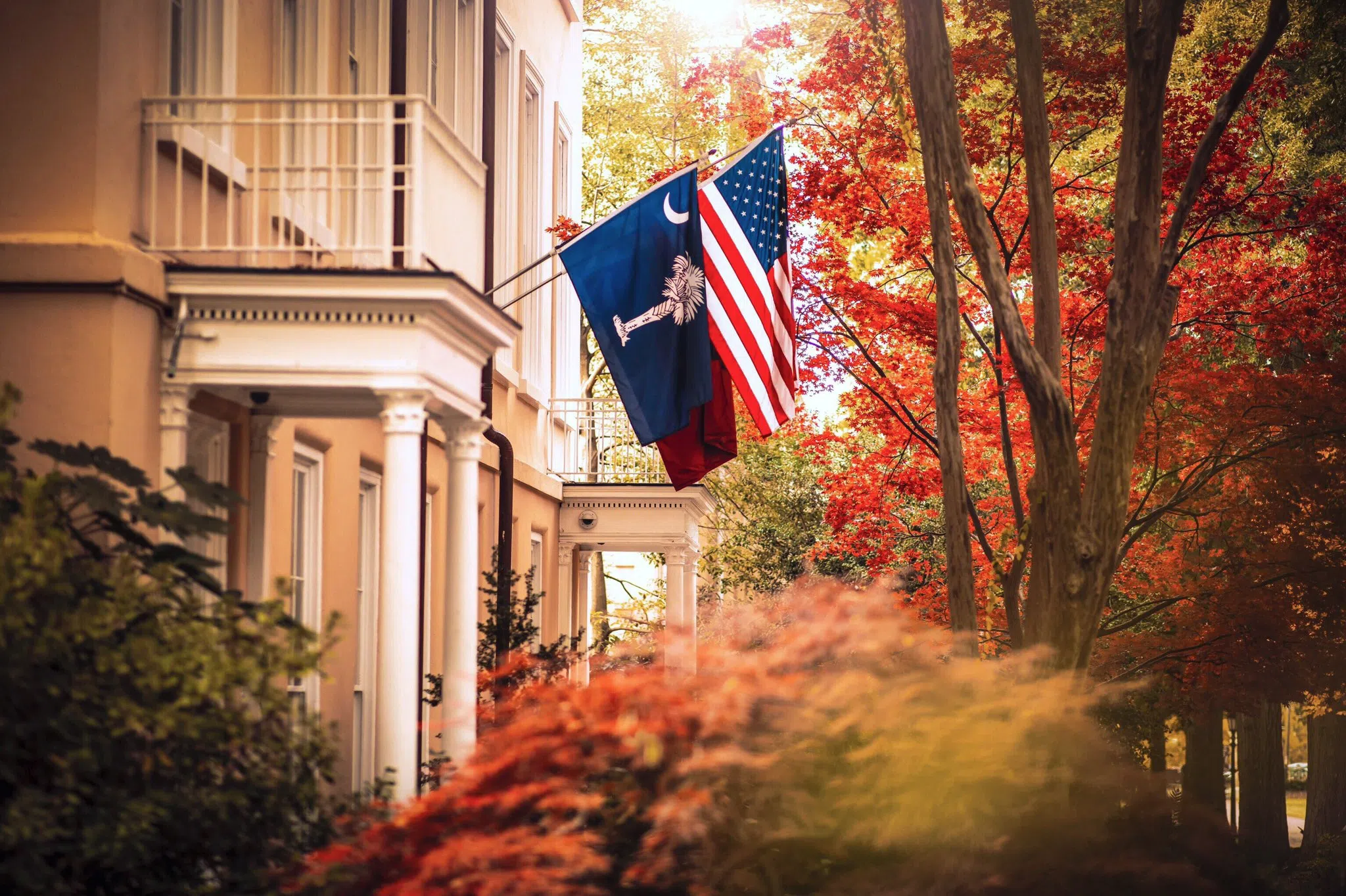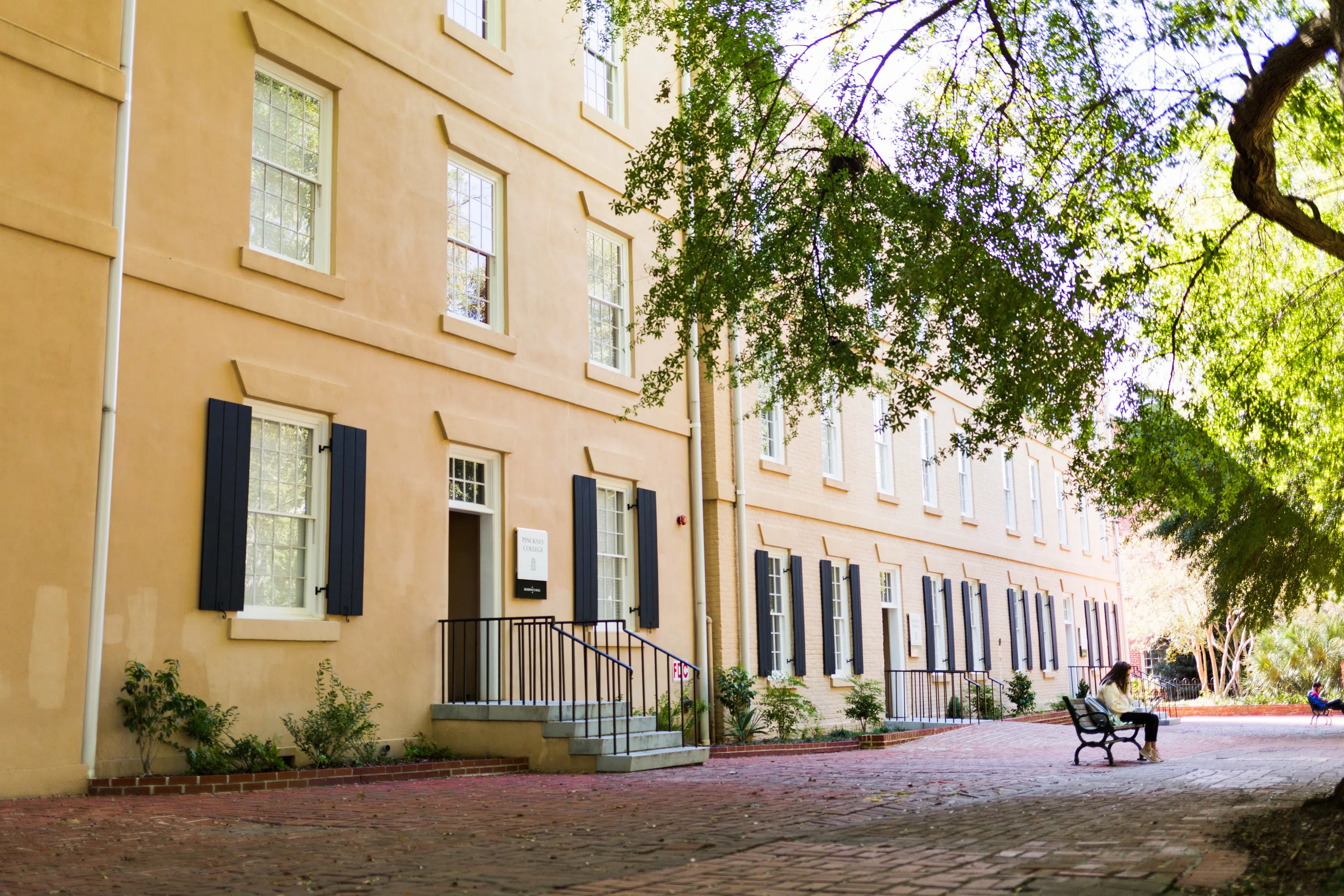Serving as the President's House since the 1950's, the original building on the site was a faculty double residence erected in 1810.
Today it is the home of President Michael Amiridis and First Lady Ero Aggelopoulou-Amiridis.
Learn more about our president.
Media Gallery
President's House (1810; 1854)
Slave Quarters (1840s)
Slavery Historical Marker
📜 President's House (1810; 1854)
Serving as the President's House since the 1950's, the original building on the site was a faculty double residence erected in 1810. The original structure was demolished and rebuilt in 1855, and it remained as a faculty residence until the university ceased providing faculty housing.
President Donald S. Russell renovated the building, converting it into the President's House. A centerpiece of the campus, it has hosted numerous visiting dignitaries, including Pope John Paul II in 1987.
President Donald S. Russell renovated the building, converting it into the President's House. A centerpiece of the campus, it has hosted numerous visiting dignitaries, including Pope John Paul II in 1987.
📜 Slave Quarters (1840s)
The last remaining kitchen and slave quarters on campus, other outbuildings were demolished as campus expanded in the twentieth century. This one survived due to constant use, primarily as storage.
While students were not allowed to bring slaves to college, faculty members were permitted to bring house slaves to campus residences. The college relied on a hiring out system with local owners to supply enslaved workers for the daily operations of the college.
While students were not allowed to bring slaves to college, faculty members were permitted to bring house slaves to campus residences. The college relied on a hiring out system with local owners to supply enslaved workers for the daily operations of the college.
⭐ Slavery Historical Marker
This marker acknowledges the vital contributions of enslaved people at the university during the antebellum era. Many of the historic buildings on the Horseshoe were made of slave-made brick and constructed and maintained by enslaved workers. The marker further states that: Enslaved workers were essential to the daily operations of the college, whether they were owned by the faculty or the college itself, or hired from private citizens.

